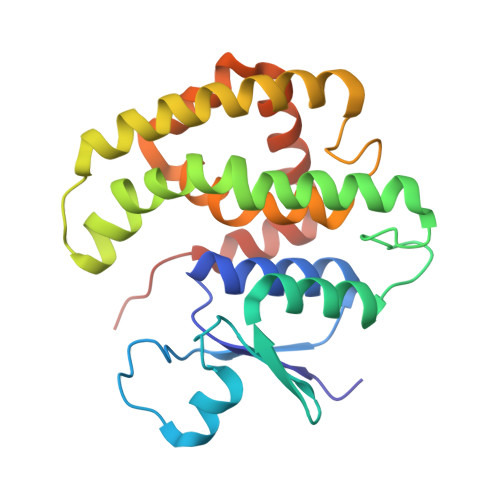Directed Evolution of Phi Class Glutathione Transferases Involved in Multiple-Herbicide Resistance of Grass Weeds and Crops.
Ioannou, E., Papageorgiou, A.C., Labrou, N.E.(2022) Int J Mol Sci 23
- PubMed: 35806486
- DOI: https://doi.org/10.3390/ijms23137469
- Primary Citation of Related Structures:
7ZA4, 7ZA5 - PubMed Abstract:
The extensive application of herbicides in crop cultivation has indisputably led to the emergence of weed populations characterized by multiple herbicide resistance (MHR). This phenomenon is associated with the enhanced metabolism and detoxifying ability of endogenous enzymes, such as phi class glutathione transferases (GSTFs). In the present work, a library of mutant GSTFs was created by in vitro directed evolution via DNA shuffling. Selected gstf genes from the weeds Alopecurus myosuroides and Lolium rigidum , and the cereal crops Triticum durum and Hordeum vulgare were recombined to forge a library of novel chimeric GSTFs. The library was activity screened and the best-performing enzyme variants were purified and characterized. The work allowed the identification of enzyme variants that exhibit an eight-fold improvement in their catalytic efficiency, higher thermal stability (8.3 °C) and three-times higher inhibition sensitivity towards the herbicide butachlor. The crystal structures of the best-performing enzyme variants were determined by X-ray crystallography. Structural analysis allowed the identification of specific structural elements that are responsible for k cat regulation, thermal stability and inhibition potency. These improved novel enzymes hold the potential for utilization in biocatalysis and green biotechnology applications. The results of the present work contribute significantly to our knowledge of the structure and function of phi class plant GSTs and shed light on their involvement in the mechanisms of MHR.
- Laboratory of Enzyme Technology, Department of Biotechnology, School of Applied Biology and Biotechnology, Agricultural University of Athens, 75 Iera Odos Street, 11855 Athens, Greece.
Organizational Affiliation:

















